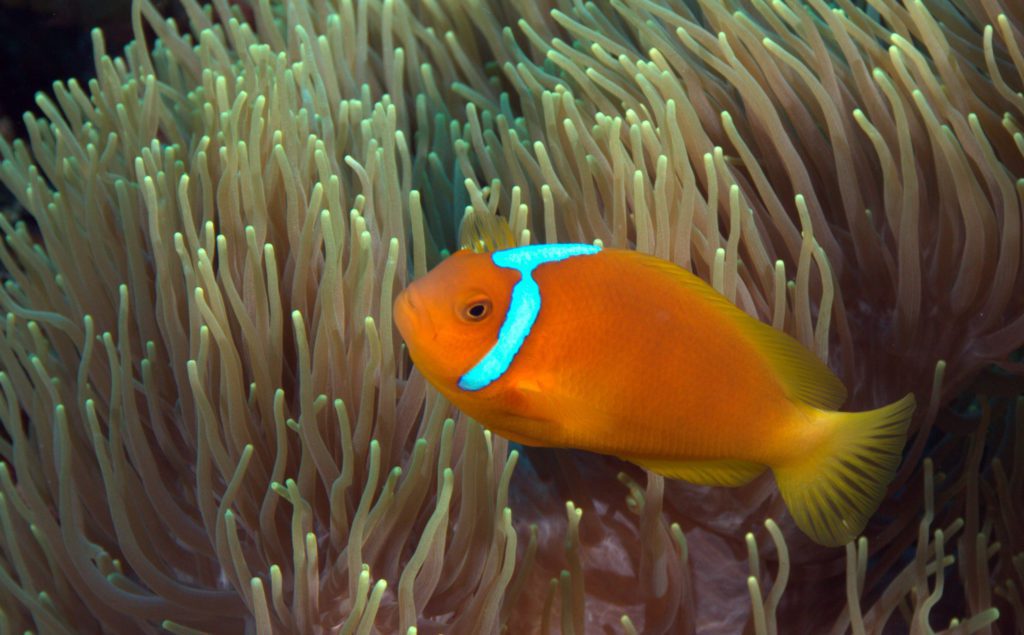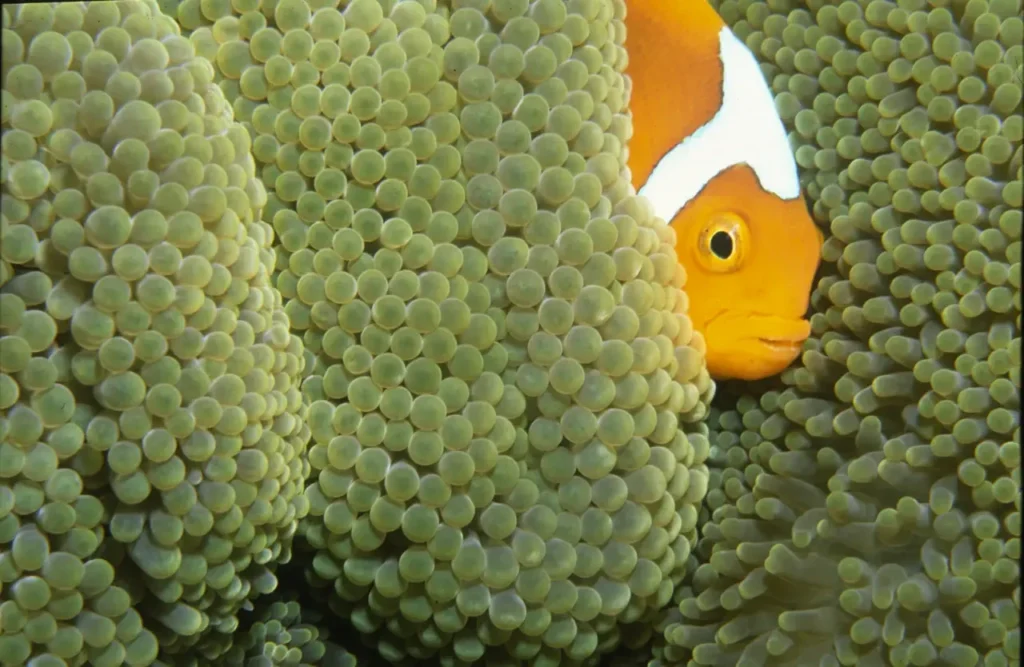The white-headed clown (Amphiprion leucokranos)- one of the the rarest and most mysterious species of clownfish, which is distinguished by its unique white "helmet" on its head. This fish not only attracts with its beauty, but also arouses interest among researchers through its unusual genetic features.
✔ It is endemic to the Western Pacific Ocean
✔ It has a unique white spot on its head
✔ It lives in symbiosis with sea anemones
✔ One of the least studied species among clownfish
This article will review origin, habitat, behavior, nutrition, reproduction and characteristics of keeping in aquariums.

Scientific classification
✔ The Kingdom: Animals (Animalia)
✔ Type: Chordal (Chordata)
✔ Class: Lucheperi pisces (Actinopterygii)
✔ Row: Perch-like (Perciformes)
✔ Family: Pomacentrovye (Pomacentridae)
✔ Gender: Amphiprions (Amphiprion)
✔ View: Amphiprion leucokranos
Latin name “leucokranos” it comes from the Greek words "leuco "(white) and "kranos" (helmet), which accurately describes the appearance of this fish.
Origin and hybrid nature
🌍 Origin
Scientists believe that the white-headed clown is hybrid viewresulting from crossbreeding cardinal clown (Amphiprion chrysopterus) and orange clown (Amphiprion sandaracinos).
🔬 Why is this unique?
✔ Not all hybrids are able to reproduce, but the white-headed clown successfully gives offspring
✔ Some individuals may have color variations that makes it difficult to identify them
✔ This is one of the few clownfish that it does not have a clearly defined distribution area
Habitat and habitat
📍 Distribution
Наблюдается Observed in waters Papua New Guinea, Solomon Islands, Palau and some other parts of the Pacific Ocean
💥 Due to the hybrid origin, the exact natural range of this species is hard to determine
🌊 Living environment
Обит Inhabits among coral reefs at depths of 2-30 m
💥 Prefers lagoons and reef slopes with moderate currents
💥 Live in symbiosis with large anemones, such as Heteractis crispa and Stichodactyla gigantea
Appearance and coloring
🎨 Main Features:
✔ The body is orange in color
✔ A distinctive white spot on the head that resembles a helmet
✔ It may have a white or yellowish stripe on the back.
✔ Size-9-11 cm
🎭 Color variations:
✔ Some individuals have a full white beanie hatwhile others are just a small spot
✔ Body color may vary from from bright orange to reddish
Lifestyle and behavior
✅ Symbiosis with anemones
✔ Lives in close relationship with anemonesthat provide it with protection
✔ Fish skin mucus prevents burns from stinging anemone cells
✔ White-headed clowns in nature rarely leave the confines of their anemone
✅ Social structure
✔ Generates small groupsconsisting of dominant female, male and several young fish
✔ When the female dies the largest male changes sex
✅ Territoriality
✔ White-headed clown less aggressive than other clownfish species
✔ Frequently it is adjacent to other peaceful reef fish
Food
🔹 Basic diet:
✔ Small crustaceans
✔ Zooplankton
✔ Seaweed
🔹 Power method:
✔ Hunts on small organisms in the water column
✔ Can There are remnants of anemone food
Reproduction
🔹 Proteroginal hermaphrodite:
✔ All white-headed clowns are males at first, but then the largest male can become a female
🔹 Spawning:
✔ Female lays eggs up to 1000 eggs
✔ The male guards the eggs and cleans them of debris
✔ Larvae hatch via 7-9 days

Predators and threats
🔸 Natural enemies:
✔ Large predatory fish (groupers, moray eels)
✔ Cuttlefish and octopus
🔸 Main threats:
✔ Destruction of coral reefs
✔ Catch for aquarium trade
✔ Climate change
Because of its rarity, the white-headed clown very popular with aquarists, which creates additional pressure on the population.
Keeping in aquariums
🟠 Aquarium requirements:
✔ Volume – from 150 liters
✔ Temperature – 24–28°C
✔ Salinity – 1.020–1.025
✔ Lighting – moderate or bright
🟠 Compatibility:
✔ Other peaceful reef fish
✔ Desirable keep together with an anemone
The white-headed clown requires stable conditions, to the recommended for experienced aquarists.
Interesting facts
💥 The white-headed clown – one of the rarest representatives of clownfish
💥 Due to its hybrid origin it cannot be classified as a separate species with a traditional range
💥 In nature, it is less aggressive than most other clownfish
🔹 It adolescent coloring may change with age
Conclusion
The white-headed clown is a unique representative of reef fishfascinating for its beauty and mysterious origin. its hybrid nature makes it rare and valuableand protecting coral reefs is the key to its survival.
Zberezhennya * * Ocean conservation is about preserving unique species!